Abstract
Antibiograms with 20 different antimicrobial disks were studied for antibiotyping of Bacteroides gingivalis isolates. The stability of the antibiotypes was tested by passage in mice. Several B. gingivalis isolates of the same subject were used to investigate the presence of different antibiotypes in one individual, while isolates from different subjects were used to investigate individual differences. The antibiotypes were found to remain stable after animal passage. All tested strains of different origin represented different antibiotypes. The isolates from one subject all belonged to the same antibiotype. Principal component analysis of the data showed that two factors were important in the discrimination of the strains of B. gingivalis. One included beta-lactam antimicrobial agents that affect the cell wall. The other included antimicrobial agents that inhibit synthesis of protein and nucleic acid. Both principal component analysis and discriminant analysis proved to be of great use in the reduction of the amount of data and the visualization of the relations between different antibiotypes of B. gingivalis in a linear map. Among the investigated subjects, different antibiotypes of B. gingivalis were found, indicating that in the mouth of an individual, one antibiotype of B. gingivalis predominates and that different persons harbor different antibiotypes of B. gingivalis.
Full text
PDF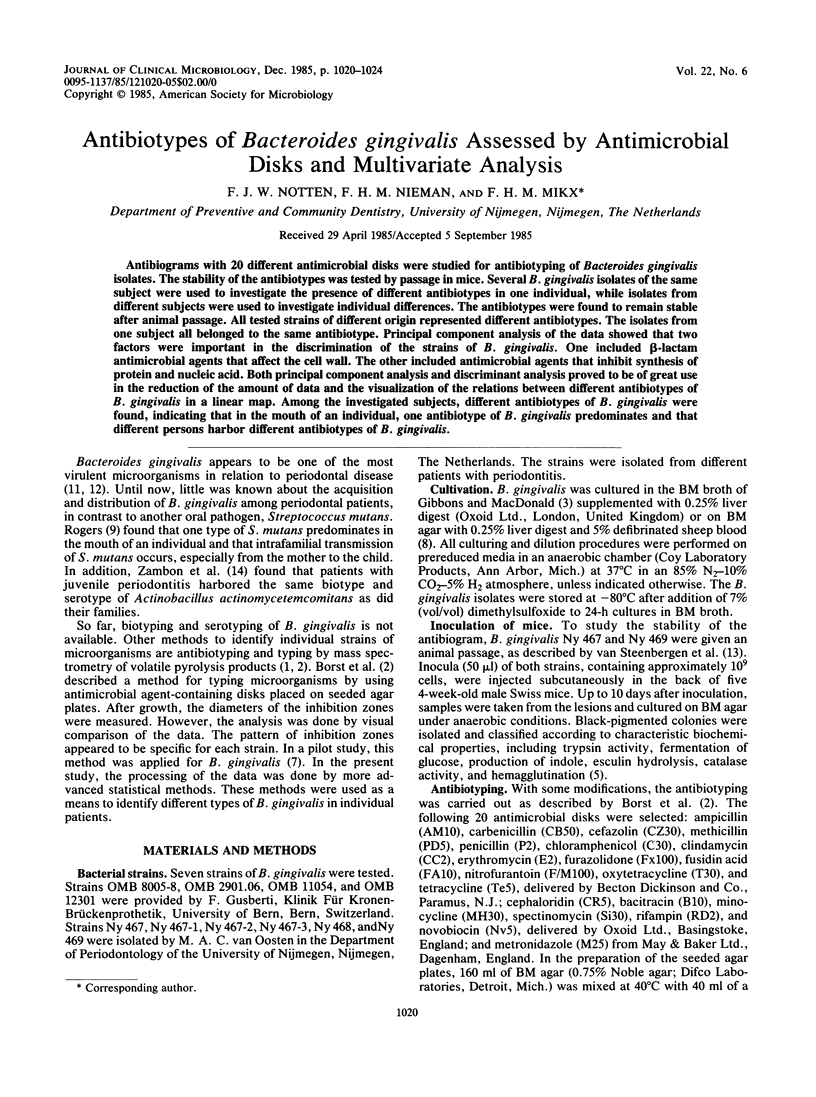
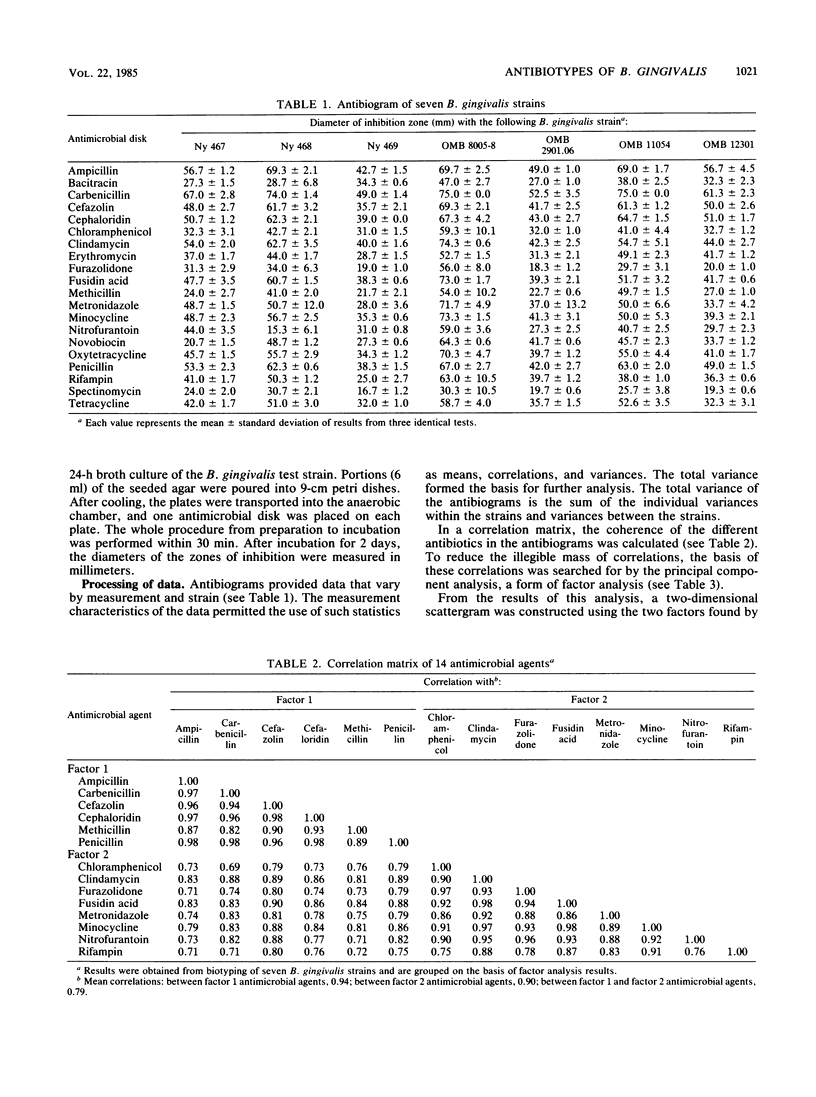
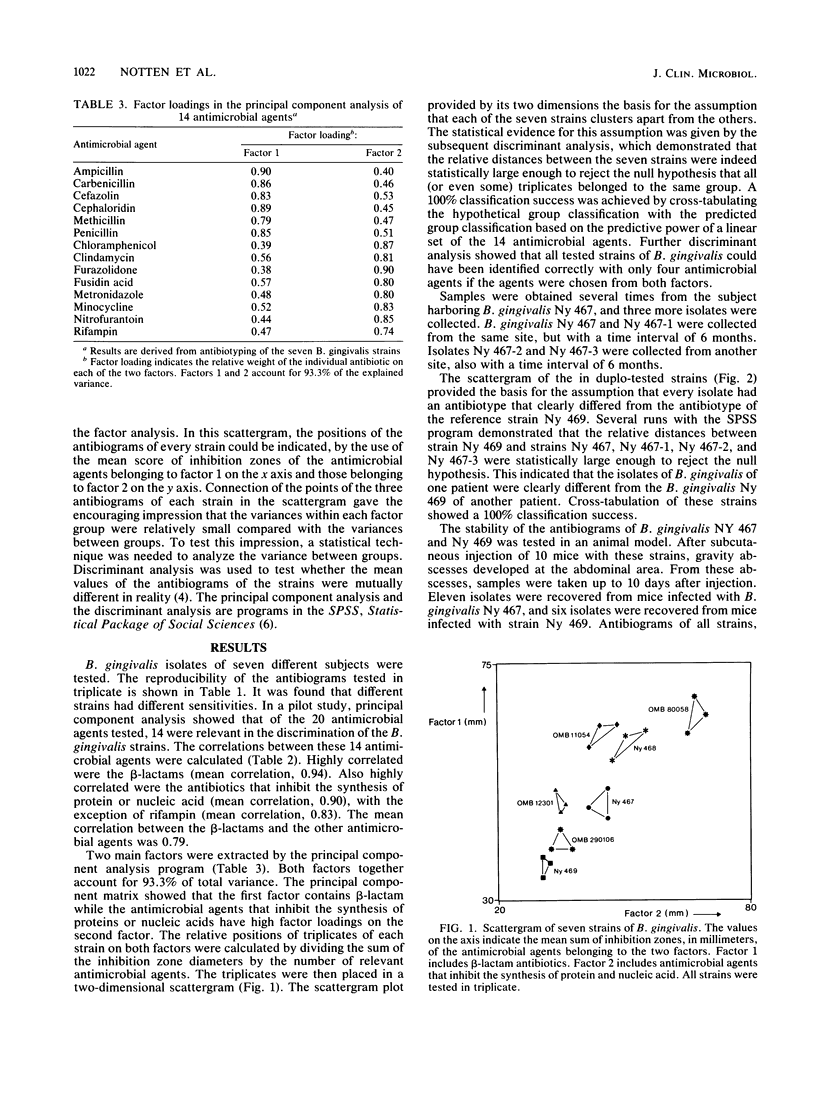
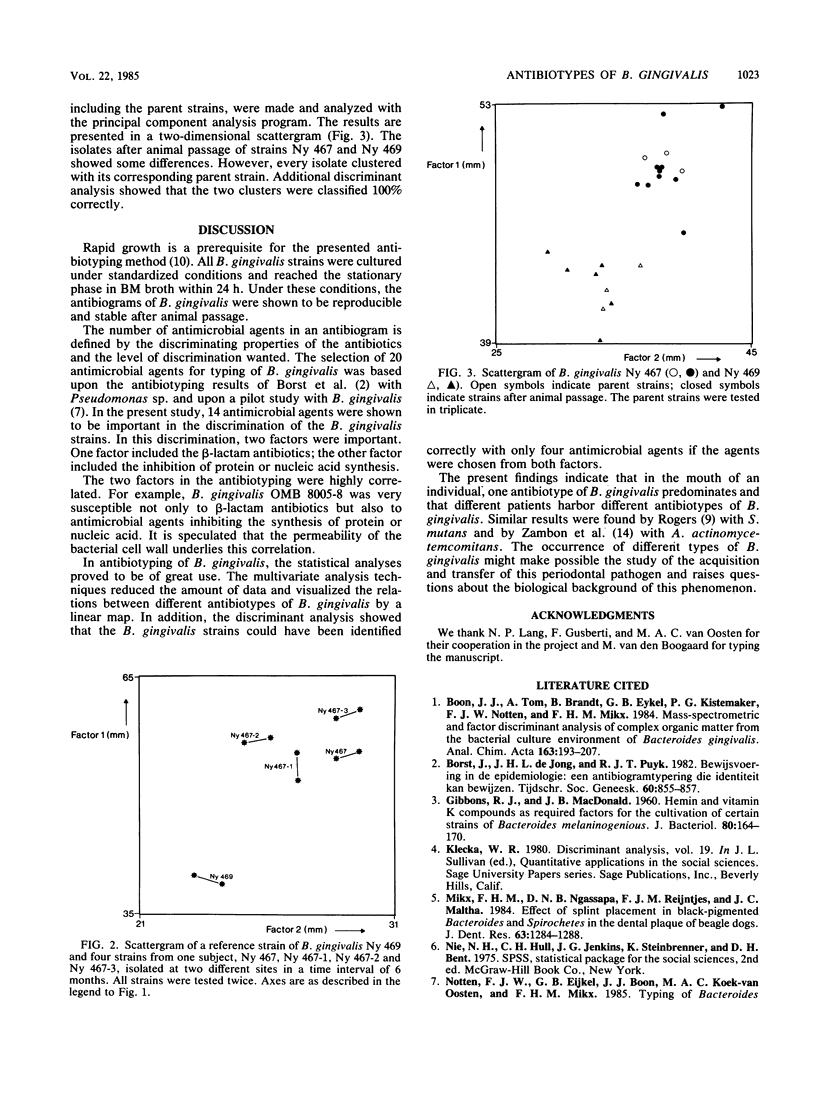
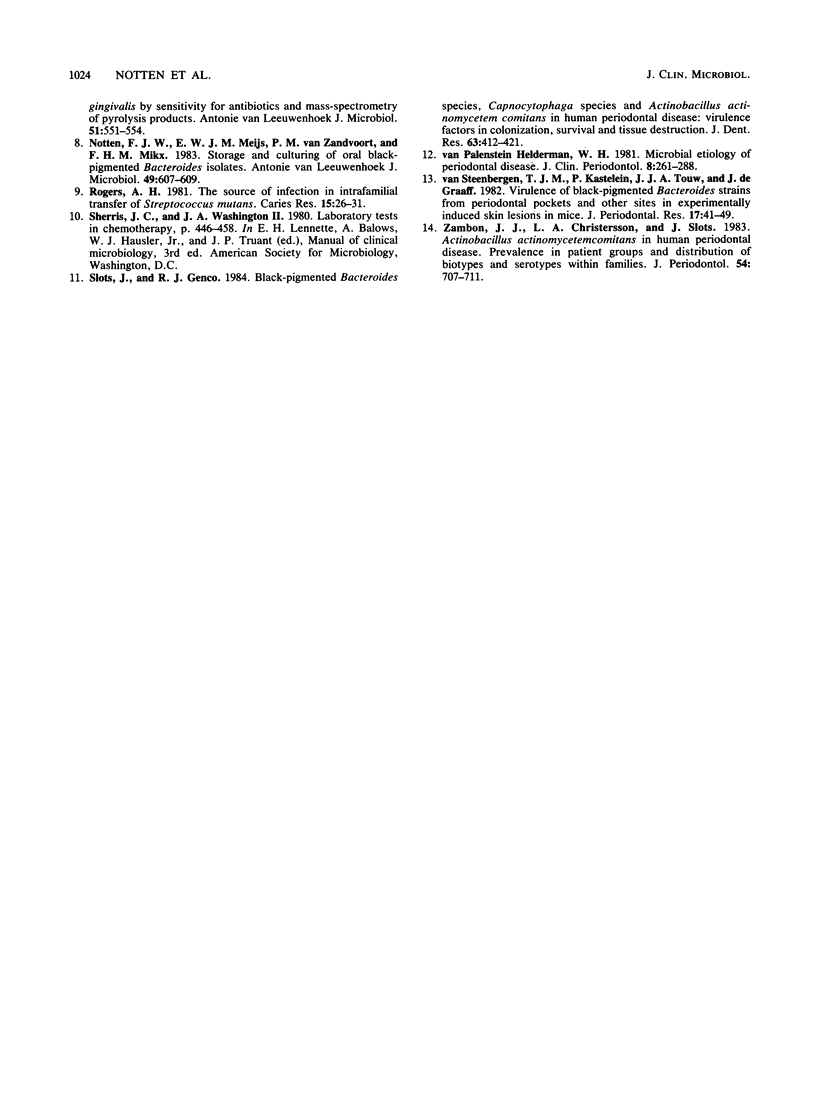
Selected References
These references are in PubMed. This may not be the complete list of references from this article.
- GIBBONS R. J., MACDONALD J. B. Hemin and vitamin K compounds as required factors for the cultivation of certain strains of Bacteroides melaninogenicus. J Bacteriol. 1960 Aug;80:164–170. doi: 10.1128/jb.80.2.164-170.1960. [DOI] [PMC free article] [PubMed] [Google Scholar]
- Mikx F. H., Ngassapa D. N., Reijntjens F. M., Maltha J. C. Effect of splint placement on black-pigmented Bacteroides and spirochetes in the dental plaque of beagle dogs. J Dent Res. 1984 Nov;63(11):1284–1288. doi: 10.1177/00220345840630110601. [DOI] [PubMed] [Google Scholar]
- Rogers A. H. The source of infection in the intrafamilial transfer of Streptococcus mutans. Caries Res. 1981;15(1):26–31. doi: 10.1159/000260496. [DOI] [PubMed] [Google Scholar]
- Slots J., Genco R. J. Black-pigmented Bacteroides species, Capnocytophaga species, and Actinobacillus actinomycetemcomitans in human periodontal disease: virulence factors in colonization, survival, and tissue destruction. J Dent Res. 1984 Mar;63(3):412–421. doi: 10.1177/00220345840630031101. [DOI] [PubMed] [Google Scholar]
- Zambon J. J., Christersson L. A., Slots J. Actinobacillus actinomycetemcomitans in human periodontal disease. Prevalence in patient groups and distribution of biotypes and serotypes within families. J Periodontol. 1983 Dec;54(12):707–711. doi: 10.1902/jop.1983.54.12.707. [DOI] [PubMed] [Google Scholar]
- van Palenstein Helderman W. H. Microbial etiology of periodontal disease. J Clin Periodontol. 1981 Aug;8(4):261–280. doi: 10.1111/j.1600-051x.1981.tb02038.x. [DOI] [PubMed] [Google Scholar]
- van Steenbergen T. J., Kastelein P., Touw J. J., de Graaff J. Virulence of black-pigmented Bacteroides strains from periodontal pockets and other sites in experimentally induced skin lesions in mice. J Periodontal Res. 1982 Jan;17(1):41–49. doi: 10.1111/j.1600-0765.1982.tb01129.x. [DOI] [PubMed] [Google Scholar]


